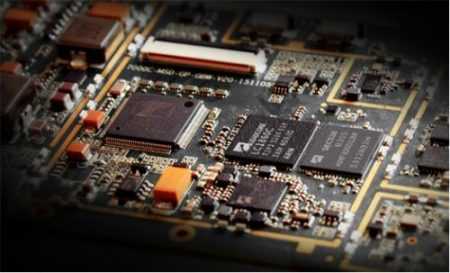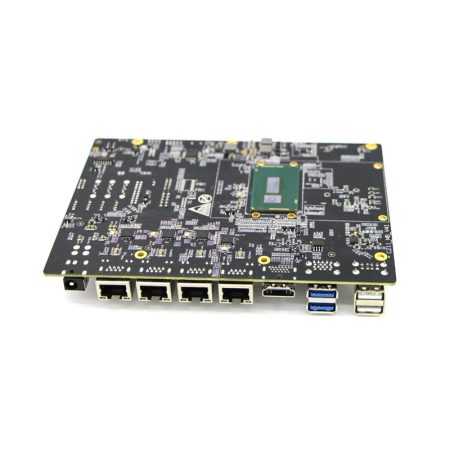- +86-755-23012705
- Building 3, Jinfeng Industrial Park, Fuyong Street, Baoan District, Shenzhen ,China
- [email protected]
In industries like aerospace and automotive, where performance, reliability, and space efficiency are paramount, Rigid-Flex PCBs (Printed Circuit Boards) have emerged as a critical technology for meeting the complex demands of modern electronics. Combining the best attributes of both rigid PCBs and flexible PCBs, rigid-flex PCBs offer unique advantages in terms of design flexibility, durability, and weight reduction—qualities that are crucial in high-performance industries such as aerospace and automotive.
In this blog, we’ll explore the advantages of rigid-flex PCBs in aerospace and automotive applications, highlighting how this versatile technology is transforming these industries and paving the way for innovation in mission-critical systems.
Rigid-flex PCBs are a hybrid of rigid and flexible PCBs that combine the benefits of both technologies into a single, integrated board. As the name suggests, rigid-flex PCBs have both rigid sections for support and stability and flexible sections that allow the PCB to bend or fold. This combination provides engineers with the flexibility to design compact, lightweight, and highly reliable circuits while maintaining the high-performance standards required for aerospace and automotive applications.
Unlike traditional rigid PCBs, which are stiff and inflexible, rigid-flex designs allow for more compact layouts with fewer connectors, enabling more efficient use of space. Rigid-flex PCBs are particularly valuable in applications where size constraints and complex configurations are critical, such as in aerospace avionics or automotive control systems.

Aerospace applications require the highest levels of reliability, performance, and minimal weight. Whether in satellites, aircraft avionics, or defense systems, rigid-flex PCBs offer several significant benefits:
In aerospace, every ounce of weight and every inch of space counts. Rigid-flex PCBs help achieve a high degree of miniaturization and space efficiency, which is especially valuable when designing small, complex systems like satellite electronics, flight control systems, and sensor modules. By integrating rigid and flexible sections into one unified board, rigid-flex PCBs eliminate the need for additional wiring and connectors, resulting in more compact designs that are both lighter and more reliable.
For example, in satellite systems, rigid-flex PCBs can be used to interconnect various subsystems, reducing the need for bulky wiring harnesses and minimizing the risk of failures due to vibration or stress in space. Their ability to fit into tight, constrained spaces is particularly useful in aerospace applications, where every component must be optimally designed to fit within the available space.
Aerospace components are subject to harsh environments, including high altitudes, extreme temperatures, and intense vibrations during takeoff, flight, and landing. Rigid-flex PCBs offer superior durability compared to traditional rigid PCBs. The flexible sections of rigid-flex PCBs allow the board to absorb and distribute stress, making them highly resistant to vibration, shock, and mechanical fatigue—common issues in aerospace environments.
This enhanced vibration resistance makes rigid-flex PCBs ideal for aerospace avionics, navigation systems, and communication equipment, where failures can be catastrophic. Additionally, the lack of external connectors reduces the risk of disconnections or mechanical failures, ensuring continuous, reliable operation in critical systems.
In aerospace applications, weight reduction is a constant priority. Rigid-flex PCBs help reduce the overall weight of the system by consolidating the functions of multiple PCBs into a single integrated board. Traditional designs may require multiple rigid boards connected by wire harnesses, but rigid-flex technology allows for more compact designs that eliminate the need for connectors, minimizing both weight and complexity.
Reducing weight in aerospace applications directly impacts fuel efficiency, payload capacity, and overall performance. As a result, rigid-flex PCBs are commonly found in satellite systems, flight control electronics, and power management units where reducing weight without compromising functionality is critical.
Aerospace systems, especially those in space, can experience extreme temperature fluctuations. Rigid-flex PCBs can be designed with advanced thermal management features, such as heat sinks or thermal vias, to ensure that the system operates efficiently across a wide temperature range. The flexible sections of the PCB can also help distribute heat more evenly across the board, preventing localized hot spots that could damage sensitive components.

The automotive industry is increasingly adopting sophisticated electronics to improve vehicle safety, performance, and efficiency. From advanced driver-assistance systems (ADAS) to electric vehicle (EV) powertrains, automotive applications demand reliable, durable, and compact PCBs. Rigid-flex PCBs offer several advantages for the automotive sector:
Modern vehicles contain an increasing number of electronic systems, such as infotainment systems, navigation units, sensor modules, and power control units. The limited space available for these systems makes compact design a top priority. Rigid-flex PCBs enable designers to optimize the layout by allowing components to be placed in areas that traditional PCBs cannot reach, such as in tight corners or curved surfaces.
In electric vehicles (EVs), where compactness and lightweight are essential for battery efficiency and vehicle performance, rigid-flex PCBs provide the space-saving benefits needed for critical applications like battery management systems (BMS), power inverters, and motor control circuits.
Automotive systems, particularly those used in engines, chassis, and suspension systems, are exposed to vibrations and impacts due to road conditions, engine operation, and external forces. Like aerospace applications, rigid-flex PCBs are well-suited for automotive environments because they are more resistant to vibration-induced failures than traditional rigid boards.
The flexibility of rigid-flex PCBs allows them to absorb shock and vibration, making them ideal for automotive applications in safety-critical systems like ADAS, autonomous driving systems, and collision detection sensors. The reduced risk of failure due to vibration also enhances the overall durability and reliability of automotive electronics.‘
Automotive electronics must withstand a broad range of temperatures, from freezing winter conditions to the extreme heat generated in the engine bay. Additionally, automotive systems often face exposure to moisture, chemicals, and dust from the road. Rigid-flex PCBs can be engineered with materials that are resistant to these environmental factors, making them highly reliable in harsh conditions.
For example, rigid-flex PCBs are often used in engine control units (ECUs), battery management systems (BMS) for electric vehicles, and sensor networks that must perform in extreme temperatures and varying environmental conditions.
Just as in aerospace, reducing the weight of automotive systems is crucial for improving overall efficiency, particularly in electric and hybrid vehicles. Rigid-flex PCBs help reduce the overall weight by integrating multiple components into a single board, eliminating the need for additional connectors or wiring. This is especially beneficial for EVs, where every ounce counts toward improving battery life and vehicle range.

Rigid-flex PCBs are a transformative technology in both aerospace and automotive industries, offering a range of benefits that are critical in today’s high-performance, compact, and highly reliable systems. In aerospace, they provide exceptional durability, vibration resistance, and weight reduction, making them ideal for flight control systems, satellite electronics, and space exploration applications. In the automotive sector, rigid-flex PCBs enable more compact designs, enhance vibration resistance, and improve reliability in systems like ADAS, electric vehicle powertrains, and engine control units.
As the demand for smarter, more efficient, and lightweight electronics continues to grow, rigid-flex PCBs will play an increasingly vital role in enabling the next generation of aerospace and automotive technologies. Their ability to optimize space, improve durability, and reduce weight makes them an essential choice for manufacturers aiming to stay competitive in these fast-evolving industries.
Make Your PCB Dreams a Reality with XPCB Limited
XPCB Limited is your go-to partner for turning your PCB dreams into reality. Our streamlined PCB manufacturing process, combined with quick-turnaround prototyping and turnkey PCBA services, ensures that your projects come to life with ease. Trust in our expertise and dedication to quality as we help you achieve your PCB goals. Join us and experience the difference with XPCB Limited.






XPCB Limited is a premium PCB & PCBA manufacturer based in China.
We specialize in multilayer flexible circuits, rigid-flex PCB, HDI PCB, and Rogers PCB.
Quick-turn PCB prototyping is our specialty. Demanding project is our advantage.
Tel : +86-136-3163-3671
Fax : +86-755-2301 2705
Email : [email protected]
© 2024 - XPCB Limited All Right Reserve
